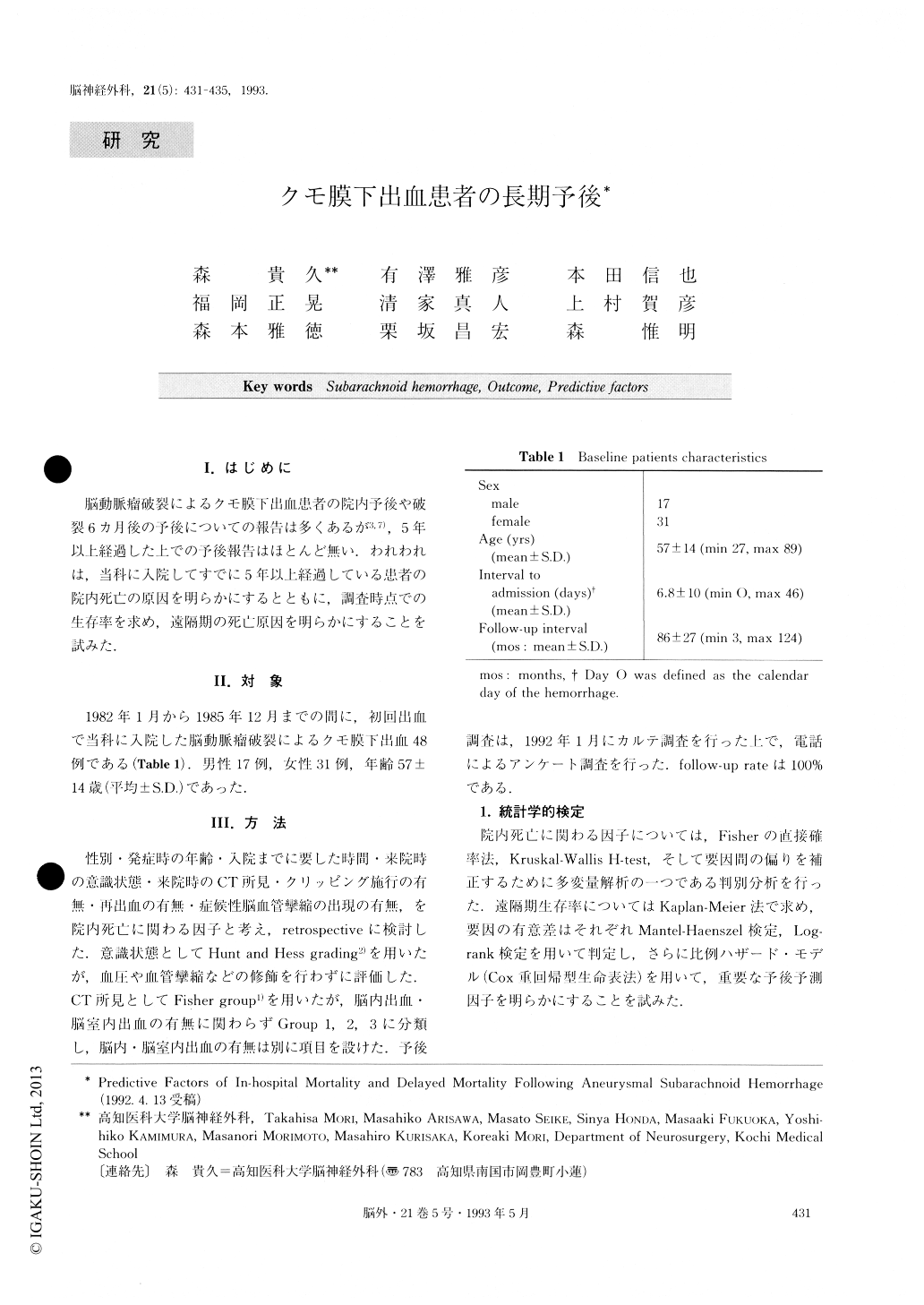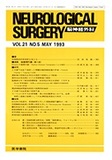Japanese
English
- 有料閲覧
- Abstract 文献概要
- 1ページ目 Look Inside
I.はじめに
脳動脈瘤破裂によるクモ膜下出血患者の院内予後や破裂6カ月後の予後についての報告は多くあるが3,7),5年以上経過した上での予後報告はほとんど無い.われわれは,当科に人院してすでに5年以上経過している患者の院内死亡の原因を明らかにするとともに,調査時点での生存率を求め,遠隔期の死亡原因を明らかにすることを試みた.
It is important to detect predictive factors for in-hospital and delayed mortality of patients with sub-arachnoid hemorrhage (SAN) due to ruptured aneu-rysm. Forty-eight patients with initial bleeding of aneu-rysmal SAN were referred to our hospital from January 1982 to December 1985. In-hospital mortality was 16.7% (8 to 48), and 15% (6) of forty patients died later during the follow-up period. Using the Kaplan-Meier method we were able to conclude that, cumulatively, there was 70.8% probabilily that much patients would survive for 10 years. We analysed predictive factors of in-hospital and delayed mortality retrospectively. The most signifi-cant predictive factor for in-hospital mortality was SAH grading on admission, and for delayed mortality (29.2%) age on admission was the best predictive factor. In fact, two patients died with cardiac event during the folllow-up period. This result suggests that, although the SAH grading on admission was the second most significant factor for delayed mortality, patients who survived in the acute phase had a survival probability similar to those in a normal control group.

Copyright © 1993, Igaku-Shoin Ltd. All rights reserved.


